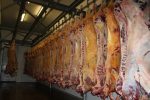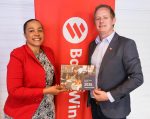A critical period approaches for new global upstream hotspot Namibia. Starting next month, a string of high-impact exploration wells will be drilled in the deepwater Orange Basin, home to multiple major discoveries.
The wells will shape future oil and gas activities in the emerging region, a key area for near-term development in West Africa. Namibia burst on the scene earlier this decade with Shell’s discovery of the Graff field, which was followed by several others.
The slate of upcoming wells from various major, state and independent firms will help determine the extent of the potential resource as operators home in on the best way to develop reservoirs believed to be large but complex. Portugal’s state-owned Galp is due to kick off a four-well campaign next month with an appraisal of its giant Mopane discovery, which Galp claims holds some 10 billion barrels of resource in place. The company is looking to farm down half of its 80% stake and could hand over operatorship to the successful bidder, possibly before Namibian elections are held on Nov. 27, sources say. Interest in Mopane has been high, with industry behemoths Chevron of the US and Petrobras of Brazil tipped as the most likely suitors.
Chevron, which operates the adjacent Petroleum Exploration License (PEL) 90, is due to spud its first Namibian exploration well in December. French major TotalEnergies is also planning a new well next month to test a prospect called Tambotti on PEL 56, to the northeast of its Venus discovery on the same block. Private South African player Rhino Resources, alongside BP-Eni joint venture Azule Energy, is also due to soon spud their first well on PEL 85, southeast of Mopane. Other farm-outs also may be in the cards — Namibian state Namcor is looking for a partner on PEL 79, which is just east of the Kudu gas field and is also expected to be gas prone. Namcor is also looking to farm down PEL 102, in the Namibe Basin off Namibia’s northern coast.
Gas has emerged as a significant challenge for development offshore Namibia. Industry sources peg the gas-oil ratio of Total’s Venus discovery at around 3,000 cubic feet per barrel; Mopane’s gas content could be even higher. Total, which is expected to take final investment decision next year on the 160,000 barrel per day first phase at Venus, is planning to reinject the gas there to avoid the complex and lengthy commercial and technical discussions that any processing would entail. The field is located 300 kilometers offshore, making evacuation of the gas to shore uneconomic.
Cumulatively, the Orange Basin will likely produce multiple trillion cubic feet of associated gas. Namibia’s government has proposed a common integrated gas-monetization strategy in which producers would share infrastructure, with processing facilities established at the southern port of Luderitz, a planned industrial hub for the country. Officials say domestic gas use is a priority. “All the gas produced must land in the country unless it is inhibiting operations to do so,” Maggy Shino, the petroleum commissioner at Namibia’s Ministry of Mines and Energy, told reporters on the sidelines of this week’s Africa Oil Week conference in Cape Town, South Africa.
Power generation would be a top priority for the gas, not just for use domestically, but also for potential electricity export to neighboring South Africa. Establishing petrochemical and low-carbon hydrogen industries in Luderitz are also possibilities. Namibia wants to use its hydrocarbon wealth to drive economic diversification and job creation, Shino says. But she stresses that policy “is not cast in stone” and the government will be flexible. A joint gas solution could enable development of some 1.3 Tcf of gas in the Kudu field, discovered in the 1970s. Current operator BW Energy, which could drill one or more new wells at Kudu next year, has not been able to make a standalone project work to date.
Namibia’s hydrocarbon future is more than just the Orange Basin. In the north of the country, Recon Africa is currently drilling the first of two wells that represent a new generation of onshore drilling for the country. Offshore, Chevron’s presence in the Walvis Basin and Exxon Mobil’s in the Namibe Basin reflects a wider interest. Exxon is drilling a closely watched well on the Angolan side of the Namibe Basin.
If successful, this would galvanize already intense investor interest in the offshore north of the Orange Basin in much the same way that Orange Basin discoveries have catalyzed activity on the South African side of the basin. As the discoveries have stacked up, the geological view on Namibia “has completely changed,” with people “now looking at the deeper waters” along the coast, says Gil Holzman, CEO of Toronto-listed Eco Atlantic. Others agree, with another source saying deeper, more westerly blocks will tend to be more oil prone. Eco Atlantic also has invested in the South African portion of the Orange Basin, including at the Total-operated 3B/4B block. In the Walvis Basin, Holzman says Eco Atlantic has “a drill-ready prospect” called “Osprey,” in the Cooper block, one of four blocks in the basin where the company is looking to farm down interests. Energy Intelligence.










